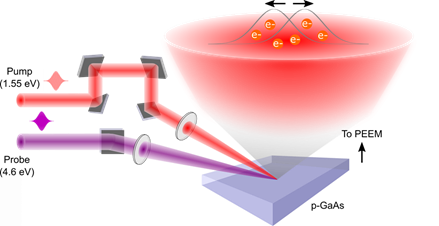Optoelectronic Circuits Having Controlled Electric Flow (No. 0140)
|
|
<< Back to all technologies |
Summary
A novel optoelectronic circuit that provides controlled electron flow.
Optoelectronics includes devices that either convert light energy to electricity or electricity to light energy. These devices account for a major share in the global semiconductor market and are witnessing growing consumption across various verticals. The classic example of manipulating the distribution of photocarriers is the separation of unlike charges – electrons and holes, via an electric field or energy gradient. This has been the cornerstone of various optoelectronic technologies to date – solar cells, photodetectors, and others. However, being able to manipulate distributions of like photocarriers, say electrons, with high resolution would provide another, perhaps even more powerful, platform for future opto-electronic control. Here we present a promising optoelectronic platform developed by a group of researchers led by Prof. Keshav Dani which provides a better electric flow control.
Applications
- Field Programmable Gate Array (FPGA)
- Programmable Diode
- Nanoscale Circuits
Advantages
- Separation of like charges
- Femtoscale and nanoscale applications
- Ultrafast control (pico seconds)
Technology
The technology is based on a novel capability to move and redistribute photoexcited electrons within an optical spot on ultrafast timescales. This is done by generating local electric fields with high resolution using light that drive currents within the optical spot and manipulate the distribution of electrons. Specifically, using the intensity variations and specific angle for an optical pulse, local electric fields are generated in a doped semiconductor, which pull apart the distribution of the electrons on ultrafast timescales.
Media Coverage and Presentations
CONTACT FOR MORE INFORMATION
![]() Graham Garner
Graham Garner
Technology Licensing Section
![]() tls@oist.jp
tls@oist.jp
![]() +81(0)98-966-8937
+81(0)98-966-8937






